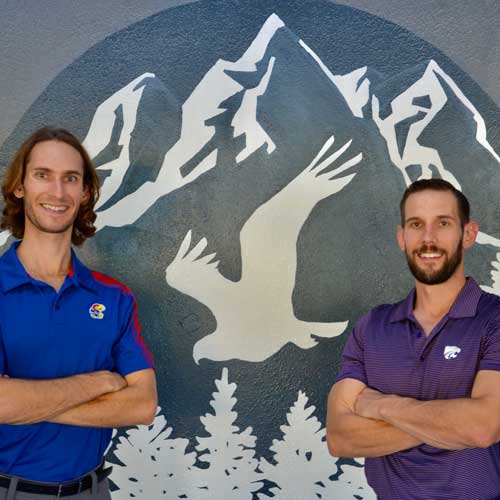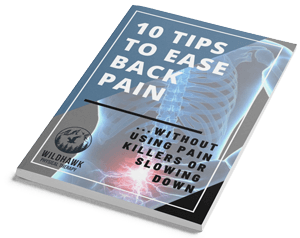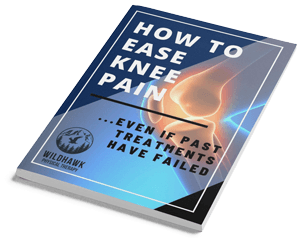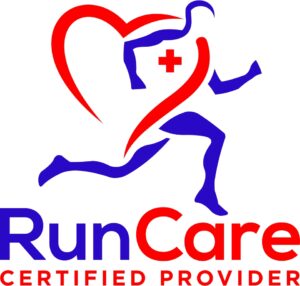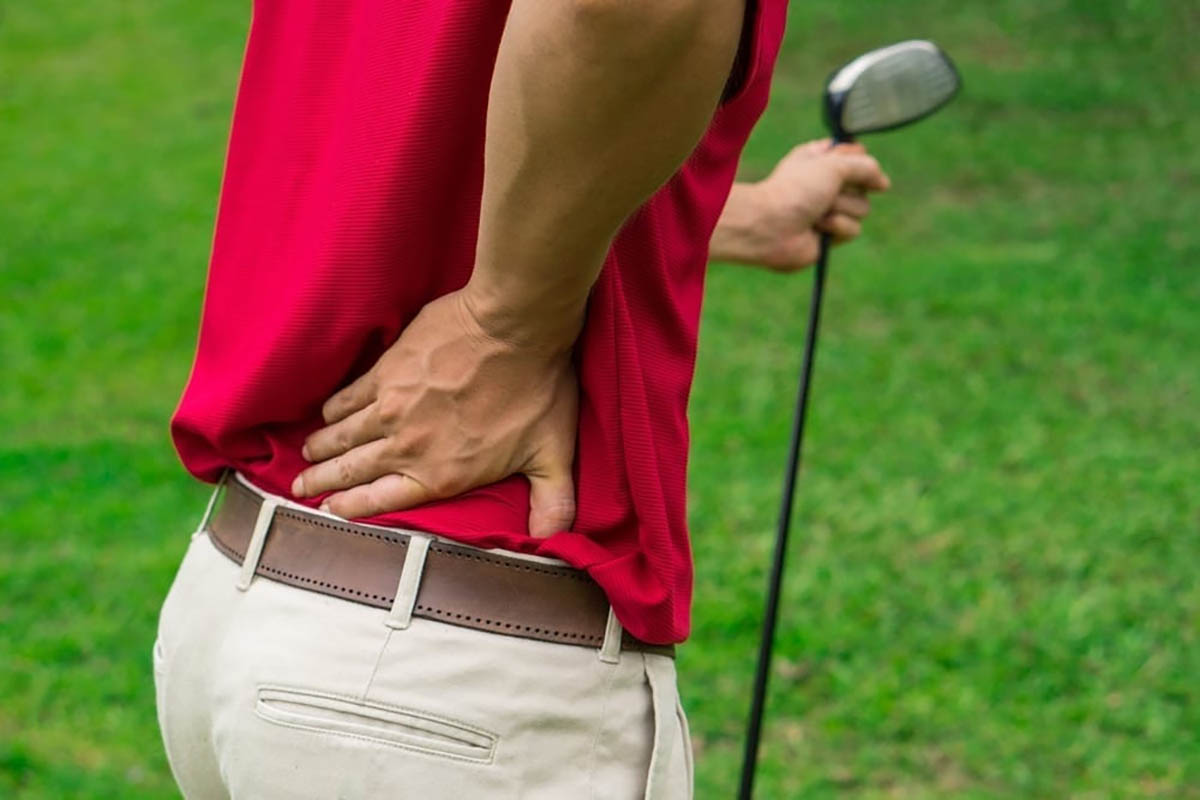
Golf is a sport that demands precision, consistency, and power, but it also comes with the risk of golf hip injuries that can severely impact your performance. Whether you’re an amateur golfer or a seasoned pro, knowing the types of golf hip injuries can help you take the necessary steps to prevent them. These injuries can cause discomfort and, in some cases, long-term damage that may force golfers to take a break from the game. However, knowing the risks and adopting preventive measures can allow you to keep playing while reducing the chance of hip injuries derailing your performance.
A hip flexor golf injury or other common injuries may arise from overuse, poor swing mechanics, or lack of proper warm-up. Addressing these issues early on is essential for recovery and injury prevention and maximizing your golfing potential.
The Role of Hips in Golf Performance
Your hip joint is critical in generating the power, rotation, and balance needed for a powerful and consistent golf swing. When you execute a swing, your hips provide a strong foundation, transferring energy through the body to the club. Proper hip rotation allows for efficient weight shifting and the generation of rotational torque, directly impacting your shots’ distance and accuracy.
Maintaining optimal hip health through flexibility and strength is essential for avoiding overuse injuries, including hip impingement or labral tear. Regular hip exercises can also help improve hip mobility and prevent joint stiffness, reducing the risk of compensating for hip pain and causing further injuries in other body parts. Golfers who neglect hip care may struggle with consistency, leading to performance issues and increased body wear and tear.
4 Common Golf Hip Injuries
Golfers can experience a variety of hip injuries that not only cause pain but also reduce mobility and interfere with the enjoyment of the game. Let’s explore the four most common injuries, their causes, and their symptoms.
Hip Flexor Strain
A hip flexor strain occurs when the muscles in the front of the hip are overstretched or overused, leading to pain and discomfort. These muscles are critical for lifting your leg and rotating your hip, which is essential for a proper golf swing. Strains often result from poor warm-up routines, sudden movements, or repetitive stress, making it important for golfers to take preventive measures.
- Causes: The hip flexor muscles are engaged in almost every golf swing, particularly during the backswing and follow-through. Overuse and improper stretching are the primary culprits behind hip flexor strains. Golfers who fail to warm up properly before playing or those who push through fatigue may put excessive stress on these muscles. Compensating for hip pain by altering your swing mechanics can exacerbate the issue, leading to a greater risk of strain.
- Symptoms and signs to look out for: If you experience pain in the groin area or front of your hip, particularly when swinging, could be a sign of a hip flexor strain. Other symptoms include tightness, discomfort when lifting your leg, and stiffness, especially after a round of golf. You may also notice difficulty with hip rotation, making it harder to follow through on your shots or perform simple daily movements.
Hip Impingement
Hip impingement is where the bones in the hip joint rub against each other, causing friction and discomfort. This is often due to repetitive motions involved in the golf swing, which place stress on the hip joint and lead to irritation or damage. If left untreated, hip impingement can lead to long-term joint problems, so early detection and treatment are crucial.
- How Repetitive Motions Lead to Joint Stress: Hip impingement occurs when the bones in the hip joint rub against each other due to abnormal friction. This is common in golfers who make repetitive motions involving rotational torque and joint stress fractures. Over time, the repeated stress on the hip joint can lead to irritation of the labrum, soft tissue injuries, and even the formation of bone spurs. Rotational torques during the swing cycle contribute to the wear and tear of the joint, putting golfers at risk for this painful condition.
- When to Seek Medical or Therapeutic Attention: If you experience deep pain in the front or groin area, especially with hip rotation or flexion, it could indicate hip impingement. This injury can often be managed with rest, physical therapy, and changes in swing mechanics, but in more severe cases, surgical interventions such as arthroscopic hip surgery may be necessary. If you notice pain persisting or worsening, it’s important to consult with a healthcare provider to determine the best course of action.
Labral Tears
A labral tear occurs when the cartilage around the hip joint (the labrum) is torn, often due to repetitive twisting motions during the golf swing. The labrum plays an important role in stabilizing the hip, and damage can result in pain, stiffness, and difficulty with hip rotation. In golfers, labral tears often arise from improper swing mechanics or overuse of the hip joint.
- How Labral Tears Occur During Golf: A labral tear happens when the cartilage surrounding the hip joint (known as the labrum) is damaged. In golf, this injury is typically caused by repetitive motion and excessive twisting or rotational torque that the hip joint endures with each swing. The labrum serves as a cushion, providing stability to the hip. When it tears, the joint can become unstable and painful.
- Impact on Mobility and Pain Levels: A labral tear can significantly affect your range of motion, particularly during hip rotation. Golfers often feel pain when rotating the hip or performing specific movements like walking or swinging the club. Other symptoms include discomfort or catching sensations in the hip joint. In severe cases, labral tears may require surgery to repair the damage and restore hip stability.
Tendonitis in the Hip
Tendonitis in the hip is the inflammation of the tendons around the hip joint, commonly caused by repetitive swinging motions. This condition is typically the result of overuse, and it can cause pain and discomfort in the hip, especially during or after golfing activities. Proper recovery techniques, including stretching and strengthening exercises, are essential for managing and preventing hip tendonitis.
- Chronic Pain Due to Inflammation from Repetitive Swings: Tendonitis in the hip occurs when the tendons in the hip joint become inflamed from overuse. For golfers, this is often the result of repetitive swinging motions that irritate the tendons in the hip flexor or gluteal region. Repetitive motion and failure to allow adequate recovery time can cause chronic inflammation, leading to pain and stiffness in the joint.
- Common Symptoms and Treatment Options: The primary symptom of hip tendonitis is pain located around the hip joint, particularly during or after swinging. You may also notice swelling and tenderness. Treatment for tendonitis typically includes rest, ice application, and anti-inflammatories to reduce pain and swelling. Strengthening and stretching exercises for the hip can help prevent future flare-ups and improve the strength and flexibility of the tendons.
What Causes Golf Hip Injuries?
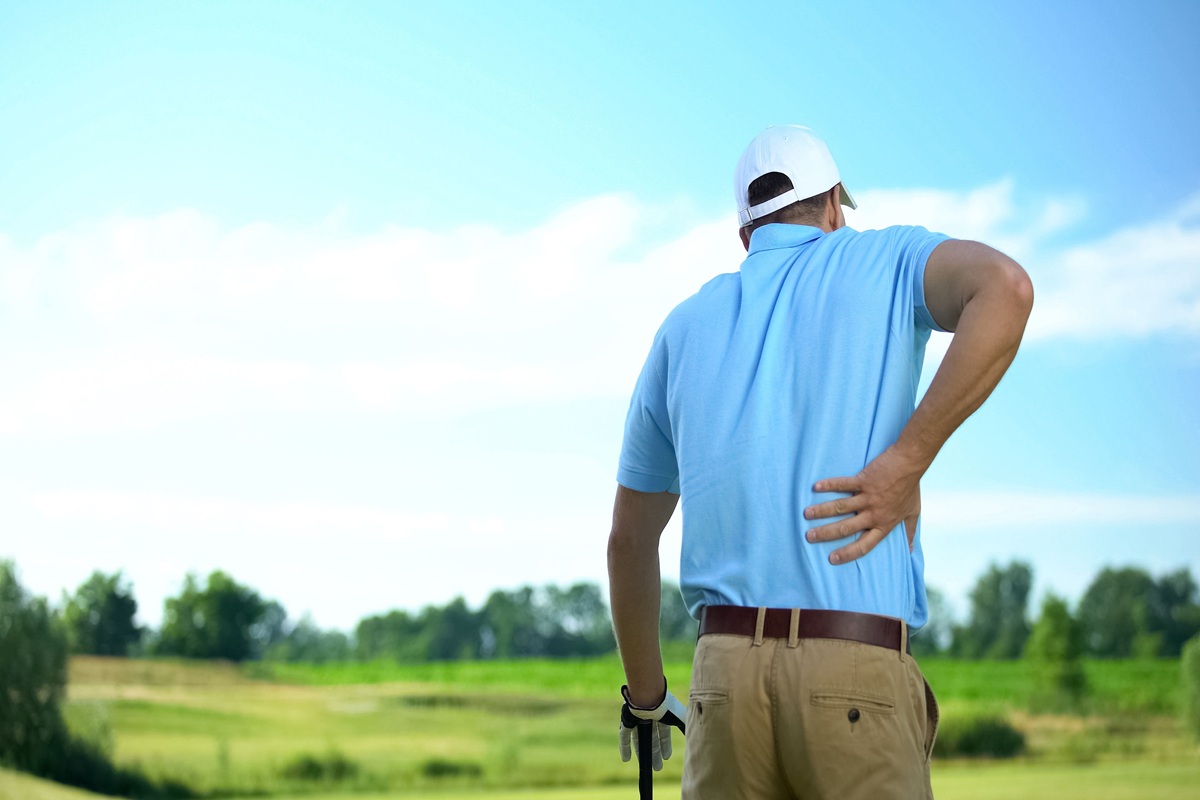
Golf is often seen as a low-impact sport, but golf hip injuries can still occur due to the repetitive nature of the game. Research indicates that injury rates per hour played can range between 0.28 to 0.60 injuries per 1,000 hours for amateur players. This statistic highlights how even casual golfers are susceptible to injury, particularly when overuse becomes a factor. The risk increases with the frequency of play, making it crucial for players to incorporate proper injury prevention programs and recovery strategies to protect their hip health.
Poor Swing Mechanics
Improper swing mechanics are one of the main causes of hip injuries in golfers. Excessive twisting or poor posture during the swing cycle can create unnatural stresses on the hip joint, leading to soft tissue injuries such as labral tears or muscle strains. In addition to hip discomfort, these poor mechanics can also contribute to low back pain after playing golf, as the twisting motion places strain on the lower back. Working with a coach to analyze and improve your stance evaluation and hand placement can help correct swing flaws, reduce hip stress, and alleviate low back pain risk.
Lack of Warm-up and Stretching
Failing to warm up properly before playing golf can leave your hip muscles stiff and prone to injury. Without warm-up and stretching, muscles are less flexible and more likely to tear or strain under the stress of a powerful golf swing. Incorporating flexibility exercises, especially targeting the hip flexors, glutes, and quads, can significantly reduce the risk of injury.
Muscle Weakness and Imbalances
Muscle weakness or imbalances in the core and lower body can place undue pressure on the hip joint, leading to overuse injuries. Core strength is crucial for stabilizing the hip joint during the swing. Weakness in the core or hips can lead to compensatory movements that increase the risk of strain. Strengthening exercises and regularly evaluating your muscle framework are key to preventing these issues.
Overuse and Fatigue
Overuse injuries are a common concern for golfers, particularly those who frequently play without adequate rest. Golfers who spend more than six hours per week in competitive play are at a higher risk of these injuries, especially those playing professionally. The stress placed on the hip joint from repetitive swings and the constant rotational torques can result in conditions like hip impingement, tendonitis, or labral tears. It’s essential for golfers to monitor their training and playing hours to prevent chronic overuse and allow adequate recovery time to avoid long-term wear and tear on the hip joint.
How to Prevent Hip Injuries in Golf
Preventing hip injuries requires a proactive approach that includes exercises, stretching, and attention to swing mechanics. Here are a few practical strategies for keeping your hips healthy and injury-free:
Effective Warm-Up Routines
A proper warm-up is essential to prepare your body for the physical demands of the golf swing, particularly the hip flexors, glutes, and core muscles that support the movement. Quick exercises targeting the hip muscles before play can increase blood flow, enhance hip mobility, and prevent hip flexor strains.
Warm-up exercises for the hips include:
- Leg swings: Stand near a wall and swing one leg forward and backward, then side to side, to activate the hip flexors, glutes, and hip rotators.
- Hip circles: Rotate the hips in circular motions to loosen up the joint and improve hip rotation.
- Walking lunges: This dynamic stretch targets the hips and quads, promoting flexibility and hip stability.
- Squats: Perform bodyweight squats to engage the glutes and activate the muscles around the hip joint, ensuring you’re ready for the repetitive movements required during your golf swing.
Starting with these simple exercises before hitting the course can significantly reduce the risk of injuries, such as hip flexor strains or tendonitis.
Flexibility and Mobility Exercises
Flexibility and hip mobility are crucial for golfers to maintain smooth and powerful swings. By incorporating stretches into your routine, you can keep the hip joint flexible, preventing stiffness that may contribute to pain and injuries like hip impingement or labral tears.
Key stretching exercises for golfers include:
- Hip flexor stretch: Lunge forward with one foot, pushing your hips forward while keeping your torso upright. This stretch helps loosen tight hip flexors, which are heavily involved in the golf swing.
- Figure-4 stretch: Crossing one leg over the other at the knee while lying on your back, creating a figure-4 shape. This stretch targets the glutes and external hip rotators, crucial in stabilizing the hip during the swing.
- Piriformis stretch: Sit on the ground with one leg extended and the other bent, placing your ankle on the opposite knee. Pull your knee toward your chest to stretch the piriformis and external hip rotators.
- Hip rotator stretch: Sit with your legs crossed and gently rotate your body in one direction while keeping your spine straight, helping to improve hip rotation and prevent stiffness.
These stretches can be done before playing, during breaks, or after rounds to maintain hip mobility and keep the joints loose.
Strengthening Programs
A strong and stable hip joint is vital for golfers, as the hips play a central role in the power and precision of the golf swing. Strengthening the muscles surrounding the hip can reduce strain, prevent injuries, and improve endurance on the course.
Key strengthening exercises include:
- Clamshells: Lie on your side with your knees bent at 90 degrees, keeping your feet together. Slowly lift your top knee while keeping your feet in contact. This exercise targets the gluteus medius and external rotators, helping to stabilize the hip joint.
- Hip bridges: Lie on your back with your knees bent and feet flat on the floor. Lift your hips towards the ceiling, squeezing your glutes at the top. This strengthens the glutes, hamstrings, and lower back, supporting the hip flexors and pelvis.
- Lateral band walks: Place a resistance band around your thighs just above your knees. Step side to side in a squat position, keeping tension on the band to activate the hip abductors and glutes.
- Single-leg deadlifts: Stand on one leg, hinge at your hips, and extend your opposite leg behind you while reaching the ground with both hands. This movement strengthens the glutes and hamstrings and stabilizes muscles around the hips.
Strengthening these key muscle groups can provide greater hip stability and reduce the likelihood of soft tissue injuries or hip impingement from poor mechanics.
Using Proper Technique
Proper swing mechanics are crucial for maintaining hip health and preventing injuries like labral tears and hip tendonitis. Poor form can put excessive stress on the hip joint, leading to discomfort and long-term damage. Key tips to reduce strain include maintaining a balanced posture, ensuring smooth weight shifting between feet, avoiding excessive twisting from the hips, and focusing on a fluid swing cycle. By incorporating these techniques, golfers can minimize hip injuries, improve performance, and reduce wear and tear on the hip joint.
Treatment Options for Golf Hip Injuries
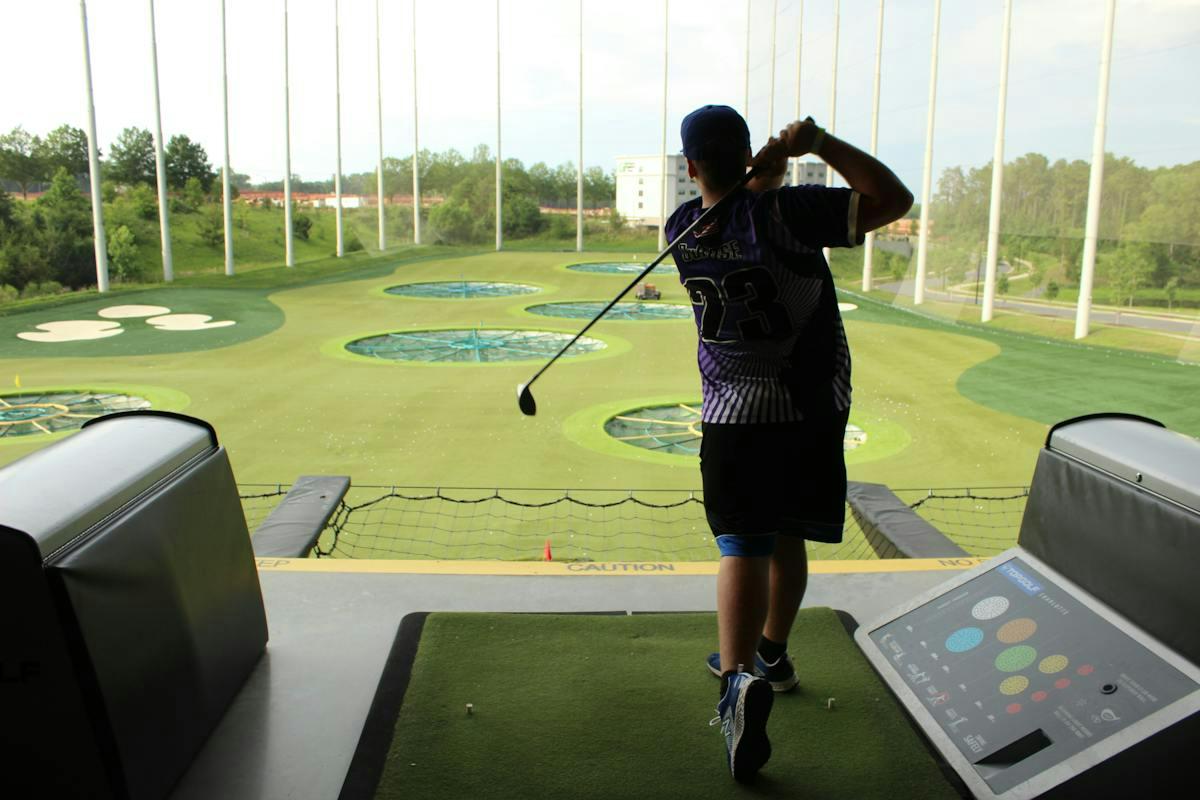
If you experience a golf hip injury, exploring the various treatment options available to aid in your recovery is essential. Golf hip injury treatment varies depending on the severity of the injury, but prompt action can significantly reduce recovery time and improve outcomes. Whether you are dealing with a hip flexor strain, hip impingement, or other common conditions, seeking the right treatment, including golf-related pain treatment, is crucial for restoring function and reducing pain. From conservative approaches like physical therapy to advanced medical interventions, there are multiple pathways to restore your hip health so you can get back to the game stronger than ever.
Physical Therapy Solutions
If you’re dealing with a golf hip injury, physical therapy can play a crucial role in your recovery process. Therapists at Wildhawk Physical Therapy are experts in treating hip injuries and can develop personalized treatment plans tailored to your needs. These plans often include manual therapy, targeted hip exercises, and specialized stretching techniques to improve hip mobility, reduce pain, and enhance strength.
By addressing the underlying causes of hip discomfort and providing a comprehensive approach to recovery, WildHawk’s therapists can help you return to the game safely and effectively, improving your performance and overall hip health. Whether recovering from a hip flexor strain or dealing with more complex issues like hip impingement, WildHawk Physical Therapy offers the expertise to help you get back on the course confidently.
Rest and Recovery Strategies
Rest is vital for recovery from a golf hip injury. Using crutches to alleviate pressure on the hip, applying heat or ice to reduce swelling, and taking breaks between rounds are all important components of hip injury golf treatment. Proper recovery strategies help reduce the risk of overuse injuries and speed up healing.
Advanced Medical Treatments
For more severe hip injuries, such as a labral tear or stress fractures, advanced treatments may be required. Options include arthroscopic hip surgery for minimally invasive repair or hip replacement surgery in cases of advanced hip arthritis. These procedures can help alleviate pain and restore hip stability, enabling you to return to the game.
Conclusion
Injuries to the hip joint are common in golf, but with the right knowledge and preventive measures, you can keep your hips healthy and your game strong. Focusing on proper warm-up and stretching, hip exercises, and good swing mechanics can reduce the risk of common injuries like hip impingement, labral tears, and hip flexor strains. If you experience pain or discomfort, early physical therapy or medical treatment, intervention can ensure a speedy recovery, allowing you to return to the course as quickly as possible.
FAQs
What Are the Most Common Hip Injuries in Golf?
The most common hip injuries in golf include hip flexor strains, hip impingement, labral tears, and tendonitis. These injuries can result from repetitive motion, poor swing mechanics, or overuse of the hip joint.
How Can Golfers Prevent Hip Flexor Strains?
To prevent hip flexor strains, golfers should focus on proper warm-up routines, strengthening exercises for the core and hips, and stretching to improve hip mobility. Regular attention to swing mechanics can also help reduce strain on the hip flexors.
When Should I See a Physical Therapist for Hip Pain?
If hip pain persists or worsens or affects your ability to play golf or perform normal activities, it’s time to see a physical therapist. Early treatment can prevent further damage and help you return to the game more quickly.


